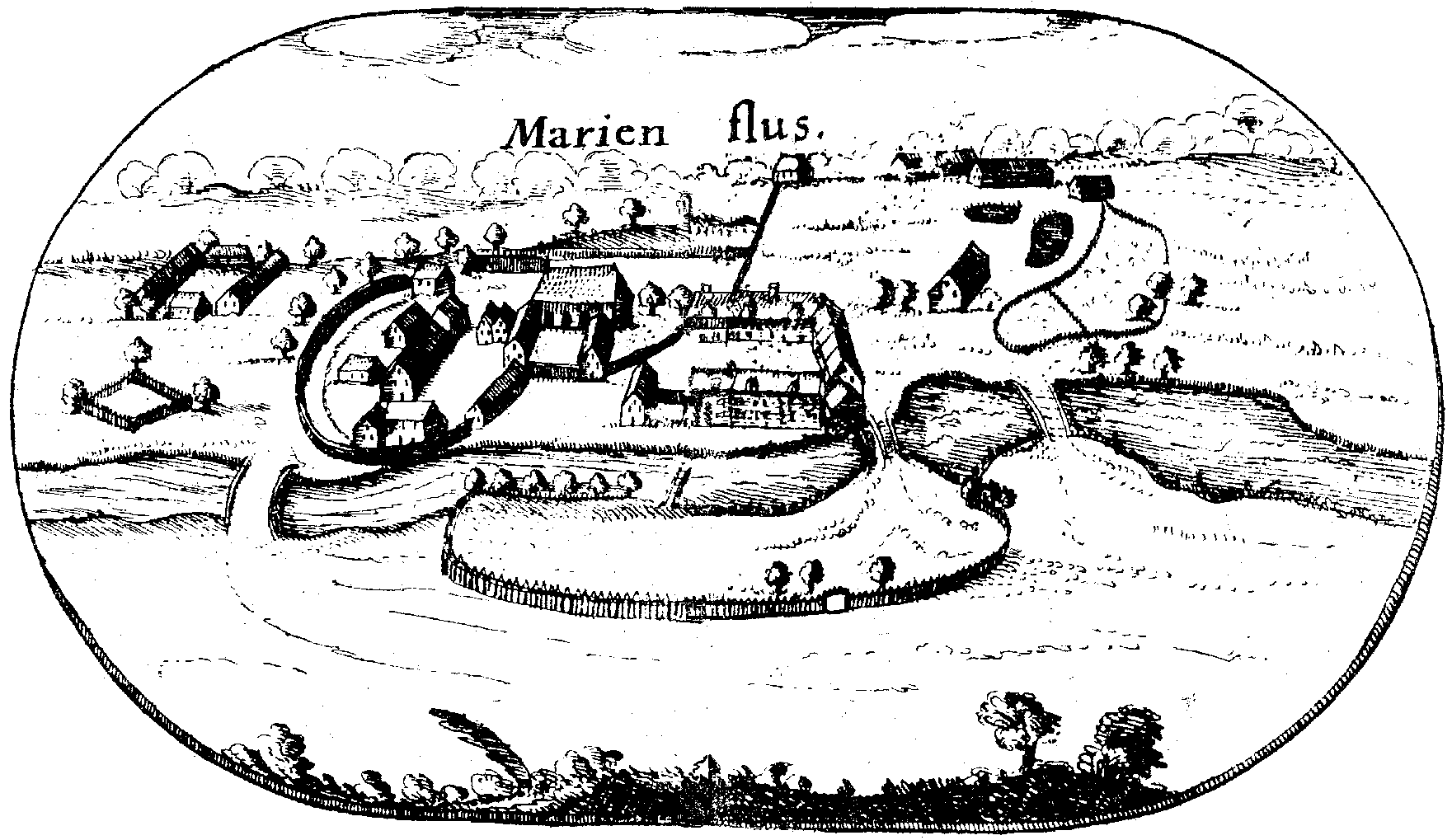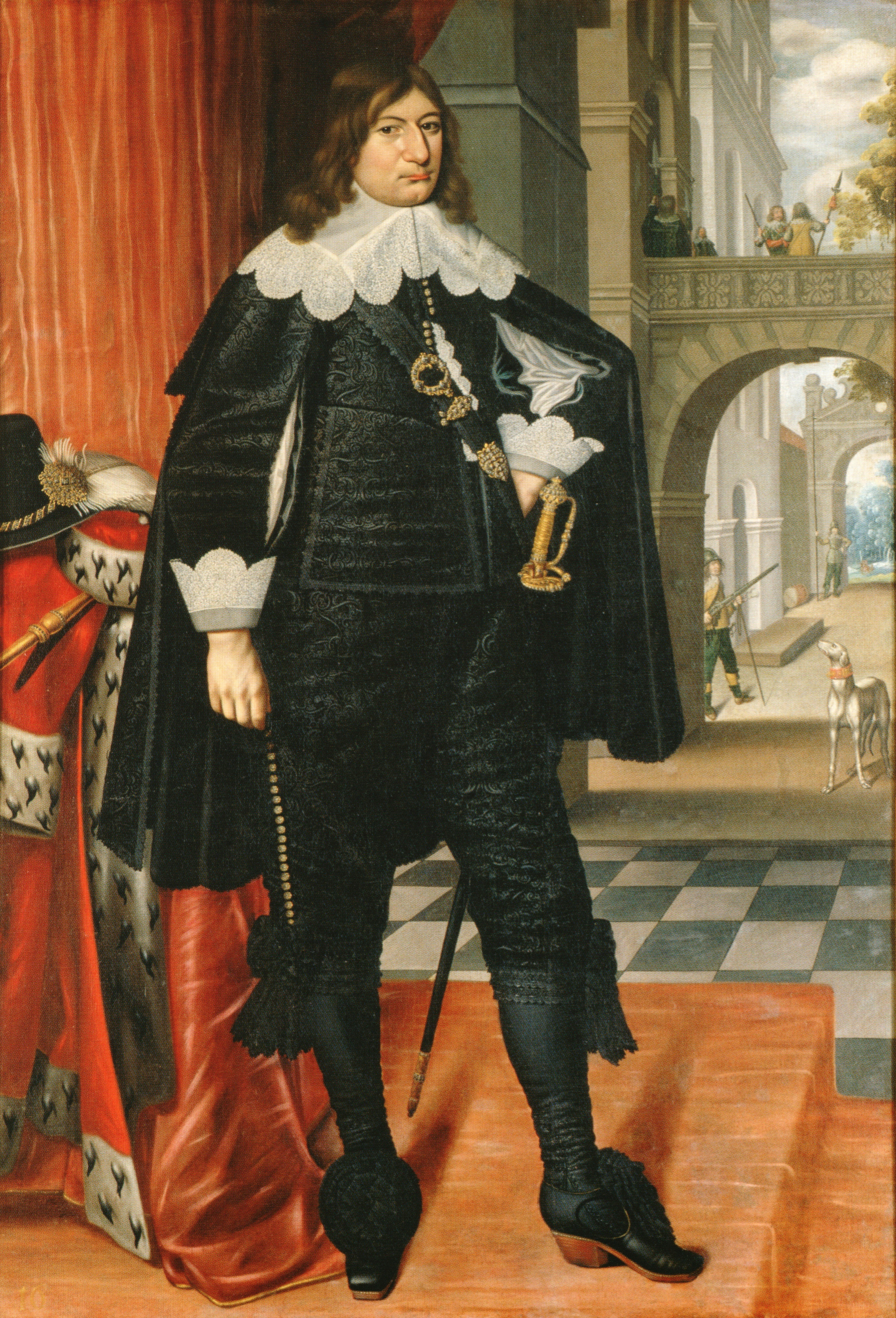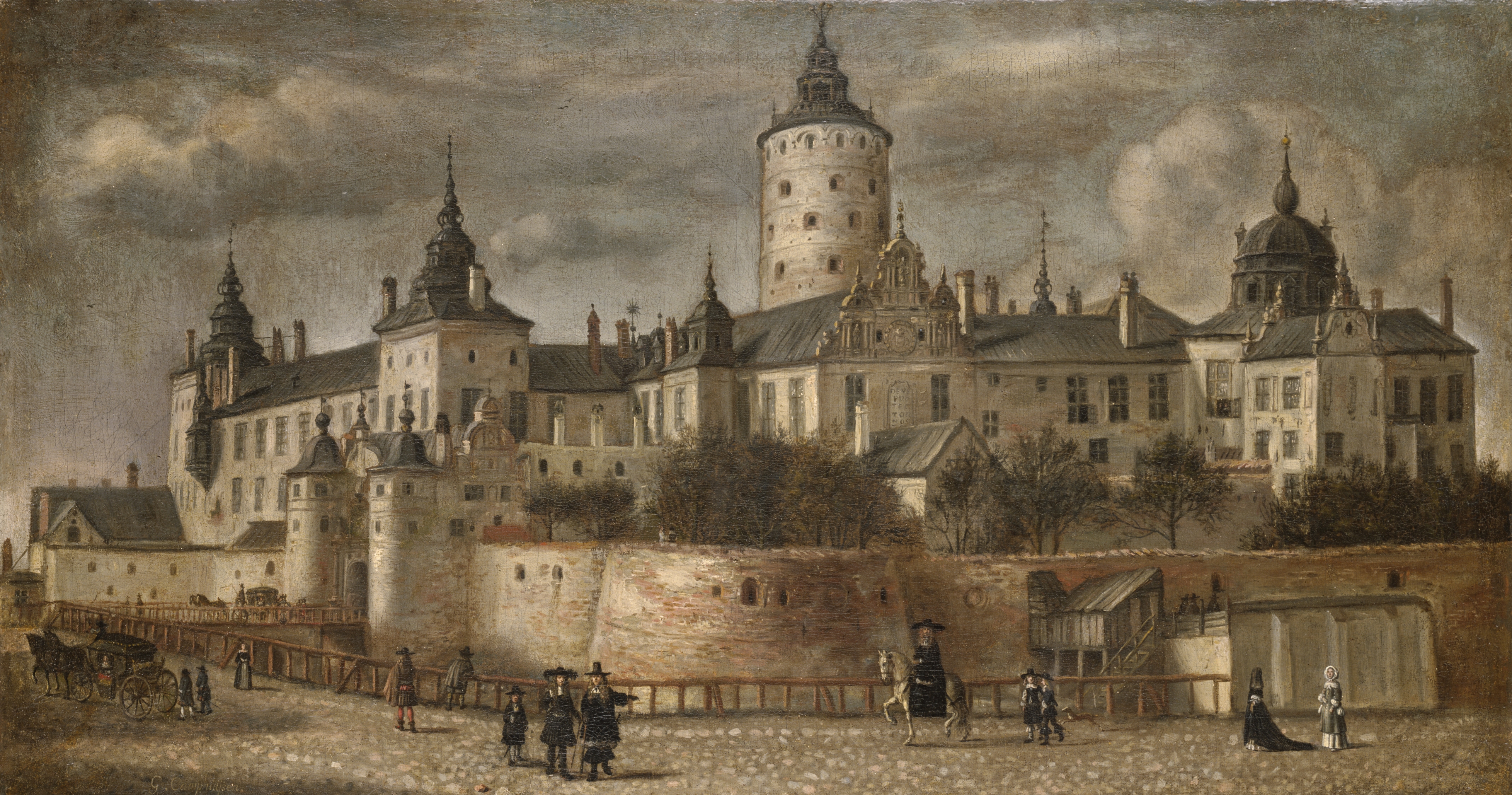|
Marianowo, West Pomeranian Voivodeship
Marianowo (german: Marienfließ in Pommern) is a village in Stargard County, West Pomeranian Voivodeship, in north-western Poland. It is the seat of the gmina (administrative district) called Gmina Marianowo. It lies approximately east of Stargard and east of the regional capital Szczecin. The village has a population of 910. Marienfließ Abbey The origins of the village go back to the foundation of Cistercian monastery in 1228 by the region's Slavic ruler, Duke of Pomerania, Barnin I the Good (c. 1217/1219 – 13 November 1278) from the Griffin dynasty (ducis Slauorum et Cassubie). In 1228, Cistercian nuns arrived and founded an abbey in Marienfließ (also Marienfliess, Marienflies). After the Protestant Reformation, the nunnery was secularized in 1569, but its purpose, to harbour unmarried or widowed noble women from the Duchy of Pomerania, continued as a Lutheran convent (damsels' foundation) for noble women. One of these noble women was Sidonia von Borcke, famous ... [...More Info...] [...Related Items...] OR: [Wikipedia] [Google] [Baidu] |
Countries Of The World
The following is a list providing an overview of sovereign states around the world with information on their status and recognition of their sovereignty. The 206 listed states can be divided into three categories based on membership within the United Nations System: 193 member states of the United Nations, UN member states, 2 United Nations General Assembly observers#Present non-member observers, UN General Assembly non-member observer states, and 11 other states. The ''sovereignty dispute'' column indicates states having undisputed sovereignty (188 states, of which there are 187 UN member states and 1 UN General Assembly non-member observer state), states having disputed sovereignty (16 states, of which there are 6 UN member states, 1 UN General Assembly non-member observer state, and 9 de facto states), and states having a political status of the Cook Islands and Niue, special political status (2 states, both in associated state, free association with New Zealand). Compi ... [...More Info...] [...Related Items...] OR: [Wikipedia] [Google] [Baidu] |
Protestant Reformation
The Reformation (alternatively named the Protestant Reformation or the European Reformation) was a major movement within Western Christianity in 16th-century Europe that posed a religious and political challenge to the Catholic Church and in particular to papal authority, arising from what were perceived to be errors, abuses, and discrepancies by the Catholic Church. The Reformation was the start of Protestantism and the split of the Western Church into Protestantism and what is now the Roman Catholic Church. It is also considered to be one of the events that signified the end of the Middle Ages and the beginning of the early modern period in Europe.Davies ''Europe'' pp. 291–293 Prior to Martin Luther, there were many earlier reform movements. Although the Reformation is usually considered to have started with the publication of the '' Ninety-five Theses'' by Martin Luther in 1517, he was not excommunicated by Pope Leo X until January 1521. The Diet of Worms of May 1521 ... [...More Info...] [...Related Items...] OR: [Wikipedia] [Google] [Baidu] |
Franzhagen Castle
The Franzhagen Castle - also known as ''Franzgarten'' or ''Franzhof'' was a castle near the present-day Schulendorf in southern Schleswig-Holstein. Before its destruction in 1716 it was owned by the dukes of Schleswig-Holstein-Sonderburg. The castle was based on an older structure that may have originated in the Middle Ages. Under Mary of Brunswick-Wolfenbüttel (1566-1626), Mary of Brunswick-Wolfenbüttel a Monastic grange, grange was added in 1608 her husband Duke Francis II, Duke of Saxe-Lauenburg, Francis II of Saxe-Lauenburg expanded it into a large castle with extensive gardens. The duke ran out of funds during the construction, so that, according to a local legend, the workers were left behind unpaid. Francis II lived in the castle until his death in 1619. After his death, it was inherited by his son-in-law Philip, Duke of Schleswig-Holstein-Sonderburg-Glücksburg, Philip of Schleswig-Holstein-Sonderburg-Glücksburg. After Philip's death, the castle passed his nephew, ... [...More Info...] [...Related Items...] OR: [Wikipedia] [Google] [Baidu] |
Eleonore Charlotte Of Saxe-Lauenburg-Franzhagen
Eleonore Charlotte of Saxe-Lauenburg-Franzhagen (german: Eleonore Charlotte von Sachsen-Lauenburg; born: 8 August 1646 in Marienfließ in Pomerania; died: 26 January 1709 in Franzhagen Castle, Schulendorf) was a duchess of Saxe-Lauenburg by birth and, by marriage, Duchess of Schleswig-Holstein-Sonderburg-Franzhagen, whose line and territorial legacy she co-founded. Life Eleanor Charlotte was the younger of two daughters of Duke Francis Henry of Saxe-Lauenburg (1604–1658), who held Franzhagen as an appanage, from his marriage to Marie Juliane (1612–1665), daughter of John VII, Count of Nassau-Siegen. She married on 1 November 1676 Duke Christian Adolph of Schleswig-Holstein-Sonderburg (1641–1702). After the death of her older sister Erdmuthe Sophie in 1689, Eleonore Charlotte became the heiress of Franzhagen with the corresponding Castle. In 1667 Christian Adolph and his hereditary estates went bankrupt, and King Frederick III of Denmark as the liege lord retracted ... [...More Info...] [...Related Items...] OR: [Wikipedia] [Google] [Baidu] |
Frederick William, The Great Elector
Frederick William (german: Friedrich Wilhelm; 16 February 1620 – 29 April 1688) was Elector of Brandenburg and Duke of Prussia, thus ruler of Brandenburg-Prussia, from 1640 until his death in 1688. A member of the House of Hohenzollern, he is popularly known as "the Great Elector" (') because of his military and political achievements. Frederick William was a staunch pillar of the Calvinist faith, associated with the rising commercial class. He saw the importance of trade and promoted it vigorously. His shrewd domestic reforms gave Prussia a strong position in the post-Westphalian political order of north-central Europe, setting Prussia up for elevation from duchy to kingdom, achieved under his son and successor. Biography Elector Frederick William was born in Berlin to George William, Elector of Brandenburg, and Elisabeth Charlotte of the Palatinate. His inheritance consisted of the Margraviate of Brandenburg, the Duchy of Cleves, the County of Mark, and the Duchy of Prussi ... [...More Info...] [...Related Items...] OR: [Wikipedia] [Google] [Baidu] |
Duke Francis Henry Of Saxe-Lauenburg
Duke is a male title either of a monarch ruling over a duchy, or of a member of royalty, or nobility. As rulers, dukes are ranked below emperors, kings, grand princes, grand dukes, and sovereign princes. As royalty or nobility, they are ranked below princess nobility and grand dukes. The title comes from French ''duc'', itself from the Latin ''dux'', 'leader', a term used in republican Rome to refer to a military commander without an official rank (particularly one of Germanic or Celtic origin), and later coming to mean the leading military commander of a province. In most countries, the word ''duchess'' is the female equivalent. Following the reforms of the emperor Diocletian (which separated the civilian and military administrations of the Roman provinces), a ''dux'' became the military commander in each province. The title ''dux'', Hellenised to ''doux'', survived in the Eastern Roman Empire where it continued in several contexts, signifying a rank equivalent to a captai ... [...More Info...] [...Related Items...] OR: [Wikipedia] [Google] [Baidu] |
Christina Of Sweden
Christina ( sv, Kristina, 18 December ( New Style) 1626 – 19 April 1689), a member of the House of Vasa, was Queen of Sweden in her own right from 1632 until her abdication in 1654. She succeeded her father Gustavus Adolphus upon his death at the Battle of Lützen in 1632, but began ruling the Swedish Empire when she reached the age of eighteen in 1644. The Swedish queen is remembered as one of the most learned women of the 17th century. She was fond of books, manuscripts, paintings, and sculptures. With her interest in religion, philosophy, mathematics, and alchemy, she attracted many scientists to Stockholm, wanting the city to become the " Athens of the North". The Peace of Westphalia allowed her to establish an academy or university when and wherever she wanted. In 1644, she began issuing copper in lumps as large as fifteen kilograms to serve as currency. Christina's financial extravagance brought the state to the verge of bankruptcy, and the financial difficulties c ... [...More Info...] [...Related Items...] OR: [Wikipedia] [Google] [Baidu] |
Gustavus Adolphus
Gustavus Adolphus (9 December Old_Style_and_New_Style_dates">N.S_19_December.html" ;"title="Old_Style_and_New_Style_dates.html" ;"title="/nowiki>Old Style and New Style dates">N.S 19 December">Old_Style_and_New_Style_dates.html" ;"title="/nowiki>Old Style and New Style dates">N.S 19 December15946 November Old_Style_and_New_Style_dates.html" ;"title="/nowiki>Old Style and New Style dates">N.S 16 November] 1632), also known in English as Gustav II Adolf or Gustav II Adolph, was King of Sweden from 1611 to 1632, and is credited for the rise of Swedish Empire, Sweden as a great European power ( sv, Stormaktstiden). During his reign, Sweden became one of the primary military forces in Europe during the Thirty Years' War, helping to determine the political and religious balance of power in Europe. He was formally and posthumously given the name Gustavus Adolphus the Great ( sv, Gustav Adolf den store; la, Gustavus Adolphus Magnus) by the Riksdag of the Estates in 1634. He is often ... [...More Info...] [...Related Items...] OR: [Wikipedia] [Google] [Baidu] |
Witchcraft
Witchcraft traditionally means the use of magic or supernatural powers to harm others. A practitioner is a witch. In medieval and early modern Europe, where the term originated, accused witches were usually women who were believed to have used malevolent magic against their own community, and often to have communed with evil beings. It was thought witchcraft could be thwarted by protective magic or counter-magic, which could be provided by cunning folk or folk healers. Suspected witches were also intimidated, banished, attacked or killed. Often they would be formally prosecuted and punished, if found guilty or simply believed to be guilty. European witch-hunts and witch trials in the early modern period led to tens of thousands of executions. In some regions, many of those accused of witchcraft were folk healers or midwives. European belief in witchcraft gradually dwindled during and after the Age of Enlightenment. Contemporary cultures that believe in magic and the superna ... [...More Info...] [...Related Items...] OR: [Wikipedia] [Google] [Baidu] |
Sidonia Von Borcke
Sidonia von Borcke (1548–1620) was a Pomeranian noblewoman who was tried and executed for witchcraft in the city of Stettin (today Szczecin, Poland). In posthumous legends, she is depicted as a '' femme fatale'', and she has entered English literature as Sidonia the Sorceress. She had lived in various towns and villages throughout the country. Alternative spellings Her name may also be spelled as Sidonie von Bork, Borke, or Borken. Life Sidonia von Borcke was born in 1548 into a wealthy noble Pomeranian family.Riedl (2004), p. 138. Her father, Otto von Borcke zu Stramehl-Regenwalde, died in 1551, and her mother, Anna von Schwiechelt, died in 1568.Riedl (2004), p. 139. After the death of her sister in 1600 she took residence in 1604 in the Lutheran '' Noble Damsels' Foundation'' in Marienfließ Abbey which, since 1569 and following the Protestant Reformation, was a convent for unmarried noblewomen. Before that she had been involved in several lawsuits concerning suppo ... [...More Info...] [...Related Items...] OR: [Wikipedia] [Google] [Baidu] |
Stift
The term (; nl, sticht) is derived from the verb (to donate) and originally meant 'a donation'. Such donations usually comprised earning assets, originally landed estates with serfs defraying dues (originally often in kind) or with vassal tenants of noble rank providing military services and forwarding dues collected from serfs. In modern times the earning assets could also be financial assets donated to form a fund to maintain an endowment, especially a charitable foundation. When landed estates, donated as a to maintain the college of a monastery, the chapter of a collegiate church or the cathedral chapter of a diocese, formed a territory enjoying the status of an imperial state within the Holy Roman Empire then the term often also denotes the territory itself. In order to specify this territorial meaning the term is then composed with as the compound ''Hochstift'', denoting a prince-bishopric, or for a prince-archbishopric. Endowment lural (literally, the 'donation' ... [...More Info...] [...Related Items...] OR: [Wikipedia] [Google] [Baidu] |
Duchy Of Pomerania
The Duchy of Pomerania (german: Herzogtum Pommern; pl, Księstwo Pomorskie; Latin: ''Ducatus Pomeraniae'') was a duchy in Pomerania on the southern coast of the Baltic Sea, ruled by dukes of the House of Pomerania (''Griffins''). The country had existed in the Middle Ages, in years 1121–1160, 1264–1295, 1478–1531 and 1625–1637. The duchy originated from the realm of Wartislaw I, a Slavic Pomeranian duke, and was extended by the Lands of Schlawe and Stolp in 1317, the Principality of Rügen in 1325, and the Lauenburg and Bütow Land in 1455. During the High Middle Ages, it also comprised the northern Neumark and Uckermark areas as well as Circipania and Mecklenburg-Strelitz. The Duchy of Pomerania was established as a vassal state of Poland in 1121, which it remained until the fragmentation of Poland after the death of Polish ruler Bolesław III Wrymouth in 1138. Afterwards the Dukes of Pomerania were independent, and later were vassals of the Duchy of Saxony from 1164 ... [...More Info...] [...Related Items...] OR: [Wikipedia] [Google] [Baidu] |


.jpg)


.jpg)
